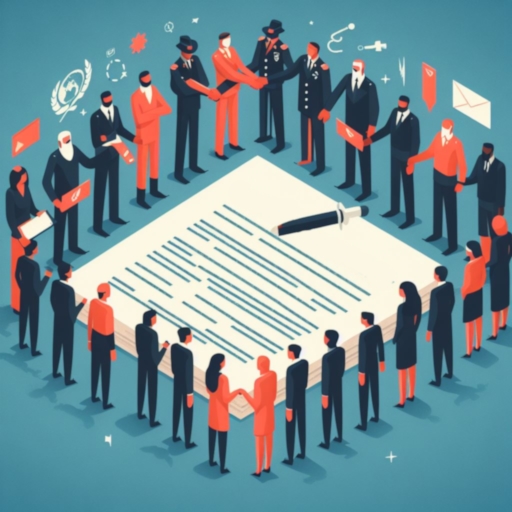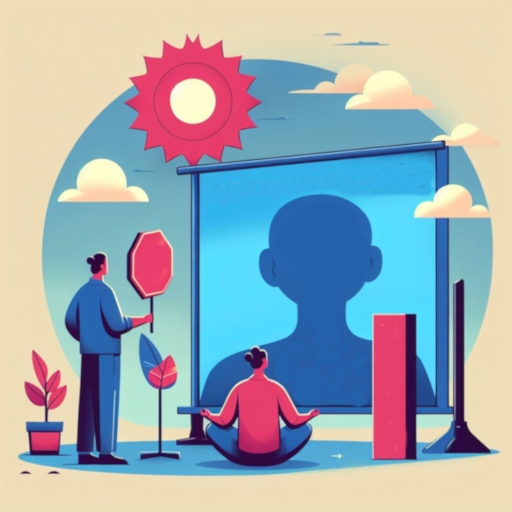
Immunity to Change
Why we get stuck when trying to change and how to get unstuck.
* Adapted from the work of Robert Kegan and Lisa Laskow Lahey
Why Understanding your Immunity to Change Matters
Running an effective organisation today demands constant improvement and transformation. That is very hard work for individuals and for teams. Organisational change has no chance of occurring effectively if the individuals involved are blocked themselves, if they are getting in their own, and each other’s way. It's no surprise then that change (or lack thereof) persists as a top leadership concern.
Yet, we all know just how hard change can be, even when we genuinely want it.
You've seen this paradox play out. People who want to get fit, lose weight, quit smoking, but fail, time and time again to make inroads on their health goals. Talented executives who commit to working at the right level, yet find themselves micromanaging. Teams who declare they want to be more innovative, but cling to the safe and familiar. Perhaps that promise you made to yourself to admit when you don't know something? And yet, it's as though some invisible force prevents you from following through.
Contrary to popular opinion, this is rarely a problem of willpower, motivation, or capability. What often keeps us stuck is a deeper psychological process designed to protect us from pain, shame, and loss.
This 'psychological immune system' makes us feel safe in the moment, but it traps us in routines that make us less adaptable and effective - precisely, the type of behaviour that puts our job and the organisation at risk.
Uncovering this self-defeating pattern can be especially challenging for leaders because their status means others are far less likely to call out their say/do gap, their avoidances, and their other defensive routines. This potentially strengthens their belief that “I’m OK. It is everyone else that needs to change.”
Understanding your immunity to change can be a life-changing experience. For many, it's a pivotal ‘Aha!’ moment, after which they feel and behave fundamentally different. Suddenly, they're able to shift the paralysing patterns and make progress towards what they really want, both at work and outside of it.
At an organisational level, the most powerful aspect of the Immunity to Change framework is that it can be used to identify systemic immunities embedded in culture and structure. This, in turn, opens the door to more effective ways of resolving dysfunction at the source.
In short, instead of pushing harder for change (and driving up fatigue and cynicism in your workforce), you release the blockages and change begins to flow through the organisation.
What is Immunity to Change?
Developed by Harvard psychologists Robert Kegan and Lisa Lahey, the Immunity to Change framework reveals why individuals and organisations resist change even when they consciously desire it. The core insight is that what looks like resistance or self-sabotage is actually a natural, protective psychological immune system operating largely outside our conscious awareness.
Just as the body's immune system protects us from physical threats, our psychological immune system protects us from perceived threats to our sense of self, competence, and security.
The mechanism behind this immune system is what Kegan and Lahey call "competing commitments". While we hold a conscious commitment to the change we want to enact, we simultaneously hold an unconscious, competing commitment that pulls in the opposite direction. This 'Commitment / Competing Commitment' conflict is our Immunity to Change.
However, there is hope. Through a structured process, some deep reflection, and persistence in the face of uncomfortable feelings, we can peel back the layers of our beliefs, behaviours, fears and assumptions, and test if our fears are true or not. If we can find some evidence that they're not true, our immunity to change may loosen, and new thinking, feeling, and acting will become possible.
Here's how.
How to Do It
We have adapted Kegan and Lahey's Immunity to Change framework with insights from Gestalt principles of human experience to provide you with a process to bring this psychological immune system into your conscious awareness.
Importantly, it's likely the initial expanded understanding you gain fades, and the familiar pattern of feeling frustrated and blocked returns as old patterns re-establish themselves.
For these reasons, we strongly recommend that you make this part of your weekly (or even daily) rhythm. Additionally, because it's so easy to be tricked by our unconscious, scheduling time to do this with a trusted colleague is especially helpful, as they'll keep you honest.
If you can make it a habit, you'll find yourself able to do it in-the-moment when you are triggered by a colleague or situation, or when you're feeling frustrated, blocked or immobilised in a situation.
Step 1: My Commitment

Complaining is so common in organisations it's like a 'lingua franca'. It's the water-cooler conversation, the 'meeting after the meeting'. Identifying what we don't like is easy, and complaints are very valuable. In every complaint hides something the person cares about but is not receiving. Most people stop at venting. Few see 'the gold' underneath the complaint and translate it into what they would like. But when you reframe the complaint into a want that you are committed to attaining, you shift from cynicism to agency, and you release stuck energy and mobilise towards change.
Write down a real complaint about your current leadership context. Do not polish it. Let it be raw.
“I’m sick of doing everyone’s work for them.”
Then ask:
What do I want that sits under this complaint?
Start the sentence with, “So, I am committed to…”
Example:
“So, I am committed to becoming a leader who fosters autonomy.”
Common Trap:
Writing a goal that is actually a complaint about others. e.g. "I'm committed to getting my team to take the initiative."
Step 2: My 50%

You move the spotlight from what others are not doing to what you are doing/not doing that contributes to the very pattern you want to escape.
Ask one question:
What am I doing or not doing that maintains the status quo?
Examples:
• “I keep saying yes when I need to say no.”
• “I rescue people instead of letting them take responsibility.”
Common Trap:
Listing a goal you think you should have, but don't genuinely care about.
Step 3: MY Competing Commitment

Here lies the turning point. You discover that you are loyal to two commitments at once. One moves you forward. One pulls you back.
Now take your blocking behaviour and flip it.
Ask:
If I changed this behaviour, what discomfort or danger do I imagine?
Your answer points to the competing commitment. And what are you committed to protecting yourself from/ Use the fear to reveal your competing commitment:
Examples:
• “If I say no, they'll pushback and complain.” And “I am also committed to not creating conflict”
• “If I delegate, the work won't be satisfactory, and I'll get the blame.” And “I am also committed to avoiding the risk of being seen as inadequate.”
Common Trap:
Listing only the "nice" mistakes (e.g. "I care too much").
Step 4: MY BIG ASSUMPTION

Under every competing commitment sits a big assumption about how the world works. Don't beat yourself up - these assumptions once kept you safe, they might not just serve you anymore. When you name them, they loosen.
Ask:
If my fear came true, what do I believe would happen?
Here lies the core belief that shapes your behaviour.
Examples:
• “If I get into conflict, it will escalate and I will lose control.”
• “If I am seen as a failure, my career will over.”
Common Trap:
Not tackling the behaviors you are embarrassed to admit. You must list the ugly stuff.
Step 5: MY Small Experiments
Insight is a good start but your transformation requires real-world proof. Pick a tiny action that tests your big assumption.
If the world reacts better than predicted, your immunity should begin to soften.
If the world reacts as you feared, you learn about your environment. (Sometimes the problem is not you. Sometimes the environment really is unsafe. That's valuable intel).
Examples:
• Say “no” once in a low-risk context. Observe the outcome.
• Interrupt and redirect a conversation where someone's talking about another person behind their back. Notice the social response.
• Delegate a small decision to a team member and watch the quality of the result.
Common Trap:
When you put the whole story together, it looks something like this.
Final Thoughts on self-care
This is deep work. Each time you explore an Immunity to Change, you'll likely feel a bit sore and rattled afterwards. However, if you practice consistently and pace yourself, you'll get stronger and more flexible. Focus on gradual progress rather than sporadic, high stakes experiments.
With practice, this gets much easier. In time, the process becomes ingrained and you will find yourself able to respond skillfully to potentially triggering events in real-time, remain calm under-pressure and perform. That's the kind of cognitive and emotional strength and flexibility that makes for great leadership.














